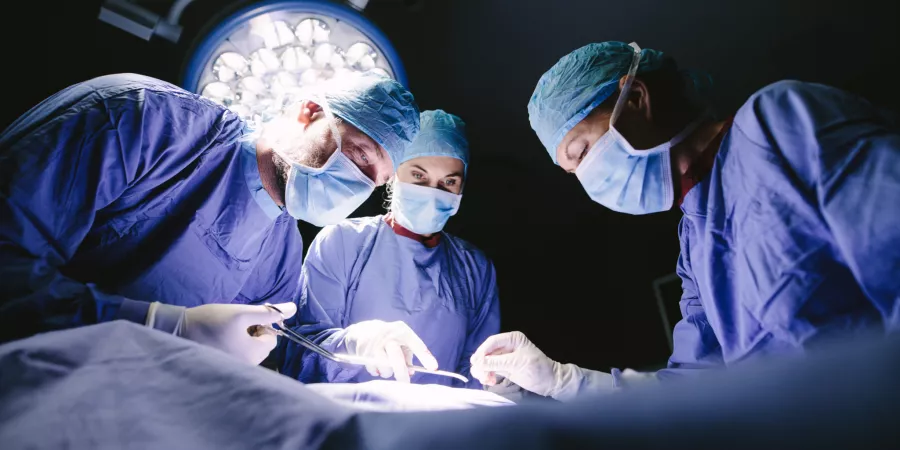4 burning issues for surgeons
Every surgeon wants to deliver gold standard care to all their patients but what are the issues that are impacting on their ability to do that and how can those issues be resolved?
1. The need to improve the precision of both the planning and the procedure phases of the surgery
Better planning leads to less time in theater, better outcomes for the patient and more efficient use of the surgeon’s time and hospital resources. The more insight the physician has into the complexities of the intervention, the more precise they can be when planning the procedure. Increasingly physicians are turning to 3D modeling to support this.
Having an accurate 3D model of the patient’s anatomy allows for a comprehensive understanding of the overall anatomical variation, as well as its 3D rotation. Our research shows that 52% of physicians surveyed changed their pre-operative plans as a result of using a 3D model.
Moreover, better pre-operative planning, including creating cutting guides and other patient-specific tools for physicians saves an average of 62 minutes per case, creating a positive knock-on effect in terms of theater usage and patient throughput.
2. The need to continually drive costs down, to mirror the similar trajectory of reimbursement
The pressure to do more surgeries within tightening budgets has unfortunately become all too familiar to surgeons. It has created an urgency to find smarter ways of working that ensure the same high standard of care for patients but require fewer dollars. Hospitals are looking at increasing patient throughput and there is also a trend towards delivering more outpatient surgeries.
Sometimes the answer is to spend a little to save a lot. This is certainly true of investing in 3D models. As noted above, by improving pre-operative planning, 3D models reduce intra-operative time which in turn reduces the risk of complications and hospital-acquired infections during surgery leading to a positive post-operative outcome for the patient (16% faster recovery times) whilst also saving costs.
Based on an analysis of current customer trends and feedback, it’s estimated that using 3D models during surgical planning would deliver an immediate and significant financial return on investment in at least 10% of surgeries.

3. The need to embrace innovation to stay relevant
Experienced surgeons know that innovation has always been central to achieving continuous improvement in surgical procedures. In the area of surgical interventions, deciding to stand still, doing it “the way we always did”, really means going backwards.
Among forward-thinking physicians there appears to be an increasing willingness to depend on new technologies that are often Artificial Intelligence (AI)-enabled. One research paper concluded that “The unique nature of surgical practice leaves physicians well-positioned to help usher in the next phase of AI, one focused on generating evidence-based, real-time clinical decision support designed to optimize patient care and surgeon workflow”.
Given the precision that these new technologies can provide, physicians are increasingly able to select the best systems for their patients’ needs, driving down costs and speeding up patient recovery. Leaning on these technologies routinely has previously been prohibitive in medicine with respect to both the time and monetary investment. However, with the advent of supporting technology advancements, such as AI, these solutions are more accessible than ever.
A reputation for innovation is also invaluable in positioning both the hospital and the surgeon as leaders in their field.
4. The need to navigate the post-COVID world
Of course, the impact of COVID-19 remains a key issue as it has affected surgery capacity and created a backlog of cases. The coming months will hopefully see the beginning of a return to normality but in the short term hospitals and physicians will be playing catch-up. Now more than ever there is a need to embrace technologies and more effective ways of working which will pave the way for the ‘new routine’ standard of care, incorporating technologies such as 3D printing and imaging into everyday surgery.
If you’d like to get hands-on experience of using 3D modeling to support your team’s planning, we can offer you a free 3D printed model of your next complex case. Just click the button below!
Do you have a complicated patient case? What could we 3D print for your speciality? Find out if you’re eligible for a free patient-specific 3D printed model of your next patient case.
Request a free anatomical model




